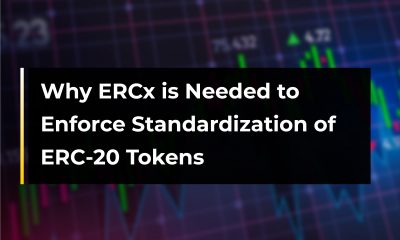News
Expert uncovers key findings from anonymous centralized exchange data

Blockchain technology has undoubtedly brought numerous advantages to individuals and businesses. It has created a trustless environment for exchanging value and has enhanced privacy in these transactions. However, with the availability of on-chain tools that are easily accessible to anyone with smartphones and computers, it has become increasingly simpler to link on-chain identifiers to real-world identities.
Conversely, centralized exchanges offer a different scenario, where individuals’ data and identities are visible only to authorized parties, and their connection to exchange accounts is safeguarded by multiple layers of security. While this restricted visibility provides a level of anonymity to exchange users, it also opens up opportunities for gaining valuable insights when closely examined.
Clara Medalie, the Director of Research at Kaiko, a leading crypto research and data provider, at the ethCC 2023 in Paris explored the potential of ‘anonymous’ centralized exchange data to provide valuable insights. Her presentation suggested that the process leading to the findings was carried out by Kaiko. According to her three insights that can be unraveled from anonymous centralized exchange data include wash trading, trading activity, and Oracle exploits.
Wash Trading
Wash trading is a type of market manipulation that involves traders trading against themselves to pump trading volumes artificially. Clara illustrated that lenient monitoring practices by exchanges can enable wash trading, which will in turn impact the market credibility. Wash trading ultimately remains a problem in crypto despite improvements since the ICO boom in 2018, Clara said.
Centralized exchange data can be analyzed using the volume-to-market depth ratio and can be used to identify outliers and detect wash trading patterns. Clara analyzed tick-level data from exchanges like bitforex, uncovering suspicious crosshairs that indicated potential wash trades. Clara emphasized the importance of robust market manipulation detection measures for exchanges to maintain market integrity, citing the recent SEC lawsuit against Binance.US for enabling wash trade.
Impact of U.S. Trading Activity
Regulatory scrutiny in the United States seems to be more focused on centralized exchanges and less strict for decentralized platforms. Centralized exchange data can be studied to gain regulatory compliance insights, Clara implied.
An analysis of the hourly trade volumes on Binance global and Binance derivatives exchange three weeks before the CFTC lawsuit by Clara, showed a concentrated trading activity during U.S. trading hours. However, the trading activity evened out after the lawsuit.
Interestingly, Clara said she compared trade volumes in 2018 to 2023, revealing that the trading activity in 2018 was flat whereas in 2023 it was heavier, resembling levels on the US-based Coinbase.
This observation underlines the importance of monitoring centralized exchange data that can be monitored for regulatory compliance and potential market manipulation.
Oracle Exploits: Manipulating DeFi Protocols
Oracle exploits pose a significant threat to DeFi protocols, manipulating price feeds sourced from centralized exchanges to trigger liquidations.
In DeFi protocols, price oracles source prices from centralized exchanges, including altcoin markets. An oracle exploit occurs when someone manipulates the price of an altcoin on a centralized exchange, causing the price to crash. This manipulated price flows through the oracle and triggers liquidations on the DeFi protocol, allowing the exploiter to financially benefit from the exploit
Clara explained that Avi Eisenberg attempted an oracle exploit on Aave, a lending protocol. Using Kaiko’s on-chain and off-chain data, Clara charts Avi’s transactions, including borrows, deposits, and liquidations, revealing the complexity of the exploit.
Avi transferred CRV, Curve’s native token, to OKX, a centralized exchange, and immediately started selling it. This led to a collapse in the price of CRV and a significant increase in trading volume. Looking at other exchanges, there was no similar activity indicating a market exploit; however, the exploit did not succeed.
Read also;
FTT holders excluded as FTX announces offshore exchange revival plan
What do you think of this article? Share comments below.
























